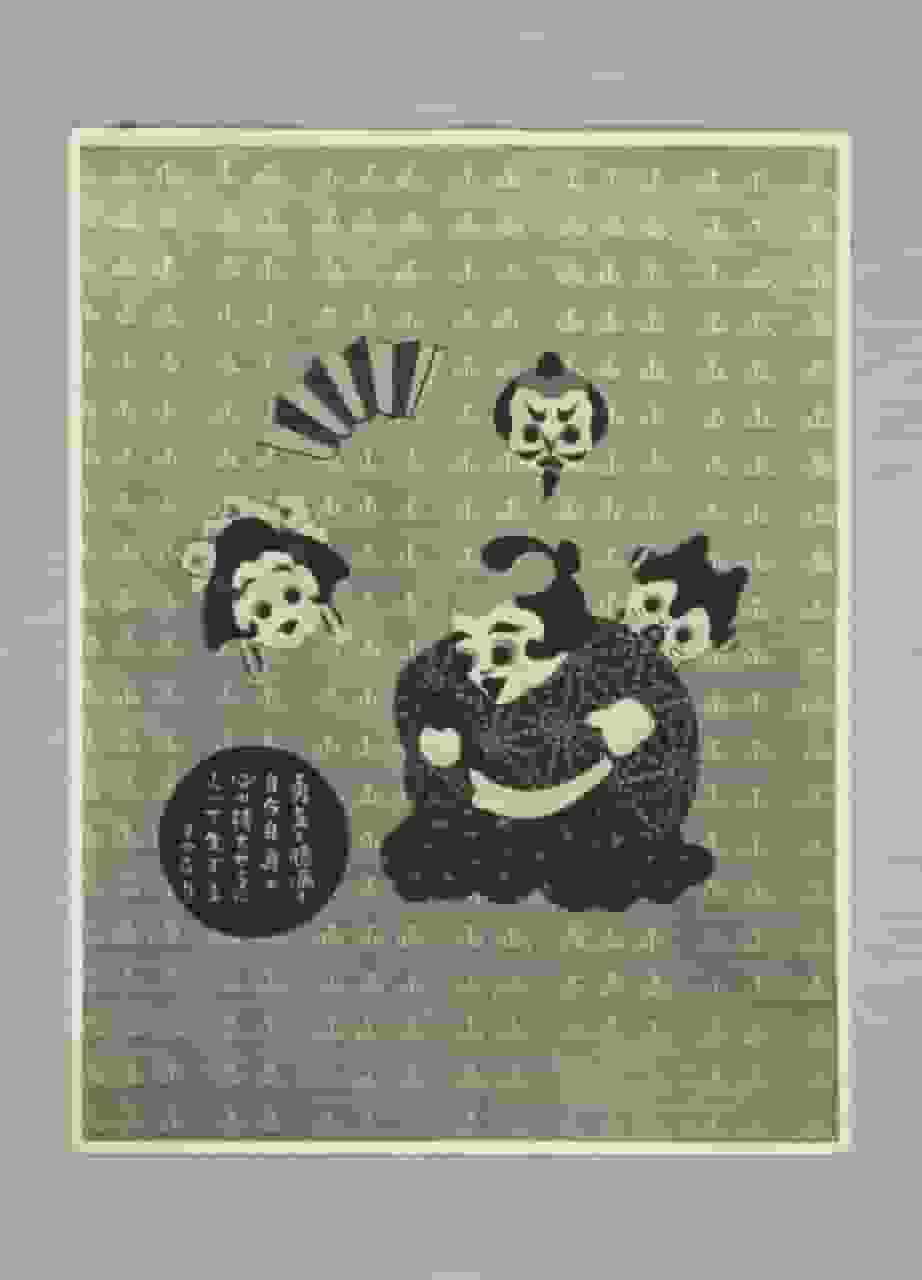"The Power of the Heart": An anime review that explores moving stories and profound themes

"The Power of the Heart" - The charm of Japanese animation from the good old days■ Public Mediatheater ■ Original MediaAnime Original ■ Release date1931 ■Distribution companyChiyogami Film Company ■Frequencies12 mins ■ Number of EpisodesEpisode 1 ■ DirectorNobuo Ofuji ■ ProductionChiyogami Eigasha, Nobuo Ofuji, Commissioned by the Ministry of Education ■ StoryThe cowardly Dangobei obtains the most powerful card in Japan and, with the help of Chinkoro Heita, Kuronyago and others, defeats the demon. ■ExplanationThere are many highlights, and the depiction of waves and action on the ocean surface at the climax are fantastic. ■Detailed reviewReleased in 1931, "The Power of the Heart" is a film that fully captures the charm of the good old days of Japanese animation. The film was produced by Chiyogami Eigasha and directed by Ofuji Nobuo. In just 12 minutes, the film unfolds a story that succeeds in leaving a strong impression on the viewer. The protagonist of the story is a cowardly Dangobei. He gains the special power of the most powerful card in Japan, and embarks on an adventure to defeat demons with unique characters such as Chinkoro Heira and Kuro Nyago. The story has themes of courage, friendship, and the power of the heart, and deeply moves viewers. The greatest highlights of "The Power of the Heart" are the depiction of the waves at the climax and the action scene on the ocean's surface. The movement of the waves, drawn using the technology of the time, creates a sense of realism that makes you feel as if you are actually at sea. The action on the ocean's surface also gives the viewer a sense of tension and thrills, building up to the climax of the story. These scenes are symbolic of the technical capabilities and artistry of Japanese animation at the time, and are enjoyable for modern anime fans as well. ■Character IntroductionDangobeiThe main character, Dangobei, is a weak and timid character at first, but after obtaining the most powerful card in Japan, he gains courage and sets out to defeat the demon. His story of growth gives courage and hope to the viewers. Penis is flatChinkoro Heira is a friend of Dangobei and an important character who joins him in defeating demons. His humorous personality and actions bring lightness and laughter to the story. Black NyagoKuro Nyago is another friend of Dangobei and has a cat-like appearance. His agility and intelligence are essential to his success in defeating demons. ■Production Background"The Power of the Heart" was commissioned by the Ministry of Education. At the time in Japan, there was a demand for animation with educational content, and this work was produced as part of that trend. Director Ofuji Nobuo used a variety of creative methods to visually express the educational message. In particular, the depiction of waves and action scenes on the ocean surface were produced with a great deal of time and effort in order to maximize their visual impact. Chiyogami Eigasha also played an important role in the Japanese animation industry at the time. "The Power of the Heart" is one of the company's representative works that demonstrates its technical ability and artistic talent, and it had a major impact on the development of Japanese animation in the future. ■ Technical evaluationConsidering the state of the art in 1931, "The Power of the Heart" deserves to be highly praised. Japanese animation at the time was still in its infancy and there were many technical limitations. However, this work overcame those limitations and succeeded in achieving both visual beauty and narrative depth. In particular, the depiction of the waves was done using hand-drawn animation techniques, and its beauty is comparable to that of modern animation techniques. In addition, the action scenes on the surface of the ocean required a lot of trial and error to express movements that were considered difficult with the technology of the time. As a result, scenes that leave a strong impression on viewers were created. ■ Cultural significance"The Power of the Heart" is a work that reflects the values and culture of Japanese society in 1931. At the time in Japan, there was a demand for animation with educational content, and this work was produced as part of that trend. The themes of the story - courage, friendship and the power of the heart - were values that were highly valued in Japanese society at the time, and they deeply moved viewers. This work also had a major impact on the later development of Japanese animation. In particular, the depiction of waves and action scenes on the surface of the ocean became the basis for the later technical development of Japanese animation. "The Power of the Heart" is a work that fully captures the charm of Japanese animation from the good old days, and is enjoyable for modern anime fans as well. ■Reasons for recommendation"The Power of the Heart" is a work that fully captures the charm of Japanese animation from the good old days. In just 12 minutes, the story unfolds and succeeds in leaving a strong impression on the viewer. In particular, the depiction of the waves at the climax and the action scene on the ocean surface were drawn using the technology of the time, successfully achieving both visual beauty and depth of story. This work was also produced as an educational animation, with themes of courage, friendship, and the power of the heart. The story deeply touches the viewer and is enjoyable enough for modern anime fans to enjoy. Furthermore, it is a work that reflects the values and culture of Japanese society in 1931, so it has great cultural significance. "The Power of the Heart" is a work that allows you to fully experience the charm of Japanese animation from the good old days, and is also enjoyable for modern anime fans. Please watch this work and feel the charm of Japanese animation from the good old days. |
<<: "Song of Spring" review: A fusion of moving story and beautiful music
Recommend
Dungeon no Naka no Hito - Appreciated for its combination of fascinating characters and deep storyline
"The Man in the Dungeon" - A deep adven...
The total box office of the Spring Festival exceeded 2 billion: "The Wandering Earth 2" led the way with a box office of over 600 million
Today is the second day of the Chinese New Year a...
Burn-Up W's appeal and reviews: A perfect balance of action and humor
BURN-UP W - Burn Up Double - Comprehensive Review...
Nembutsu Monogatari 6: A fusion of profound themes and beautiful visuals
Detailed review and recommendation of Nembutsu Mo...
The dubbing trailer of the animated film "Strike Back" took a year and a half to select the actors
The domestic animated film "Escape from the ...
The appeal and reputation of Turn A Gundam: A thorough explanation of the world and story of Turn A Gundam
Turn A Gundam: A timeless story and its appeal &q...
New trailer for "Kikaidentai Zenkaiger THE MOVIE" will be released on February 20
The latest trailer for "Kikaidentai Zenkaige...
The appeal and reviews of "Pokonyan!": The perfect balance of relaxation and adventure
Pokonyan!: Fujiko F. Fujio's World of Love an...
Gunjo Fanfare: What is the appeal of this youth drama depicting the world of horse racing?
Ultramarine Fanfare - A Horse Racing School Story...
The domestic animated film "Mr. Miao" is released today and the new poster is released
The domestic adult animation "Mr. Miao"...
"Barbie" live-action movie new set Reuters photos sweet girl turned into hot girl
Recently, Reuters photos of the new set of the Ba...
The appeal and evaluation of "Kopihan": The world of anime seen from a new perspective
Kopihan - A divine story set in the future of Tok...
The new OVA trailer of the famous work "God of War in the Sky" will be released in theaters on November 5
The famous robot animation series "Far in th...
The first PV of Tsuburaya's new animation "SSSS.DYNAZENON" is released
According to the latest official news, the first ...
Hikaru no Go: A review and review of a classic anime that depicts the charm of Go and the brilliance of youth
Hikaru no Go: The story of a boy fascinated by th...









